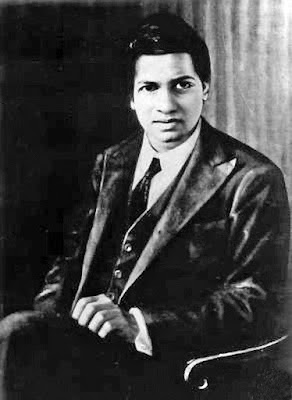 |
| Srinivasa Ramanujan |
Srinivasa Ramanujan, the extraordinary Indian mathematician who made significant contributions to mathematical analysis, number theory and continued fractions, was born in Erode, Tamil Nadu, during the British regime. Since childhood, he found himself attracted to solving mathematical equations and problems. Considering, Srinivas Ramanujan education, He was so intent on mathematics that he could not focus on any other subjects and failed most of them, leaving himself without any graduation certificates.
During his short life, Ramanujan independently compiled nearly 3,900 results of which many were totally new. His genuine and unconventional results, such as the Ramanujan Prime, the Ramanujan Theta function, Partition formulae, and Mock Theta functions, have opened entire new areas of work and further research. It took ages for contemporary mathematician to prove his theorems.
Ramanujan is often compared with other mathematical geniuses such as Eular and Jacobi who possessed incredible calibers. He became youngest Fellows of the Royal Society at his time and only the second Indian member to do so, also the first Indian to be elected a Fellow of Trinity College, Cambridge.
During his short life, Ramanujan independently compiled nearly 3,900 results of which many were totally new. His genuine and unconventional results, such as the Ramanujan Prime, the Ramanujan Theta function, Partition formulae, and Mock Theta functions, have opened entire new areas of work and further research. It took ages for contemporary mathematician to prove his theorems.
Ramanujan is often compared with other mathematical geniuses such as Eular and Jacobi who possessed incredible calibers. He became youngest Fellows of the Royal Society at his time and only the second Indian member to do so, also the first Indian to be elected a Fellow of Trinity College, Cambridge.
Hardy-Ramanujan Number 1729
While on his stay in England, Ramanujan partnered with G. H. Hardy, a renowned English Mathematician, at the University of Cambridge. Both of them formulated many equations together and propounded many theorems to the field of mathematics. Hardy was a mathematical rigour, whereas Ramanujan was a deeply religious man who relied very strongly on his intuition and insights. While in England, Hardy worked hard fill the gaps in Ramanujan’s education and mentor him in the need for formal proofs to support his results, without disturbing his inspiration- a conflict that is not found easy. |
| Ramanujan (Center) and G.H.Hardy (Extreme Right) |
The number 1729 which is now known as the Hardy-Ramanujan number leads to a famous event. It occurred when Hardy visited Ramanujan at a hospital to see his well being. In Hardy’s words: I remembered seeing him when he was ill at Putney. I ridden in taxi cab bearing number 1729 and I remarked that the number seemed to be rather a dull one, and that hoped that it was not an unfavorable omen. “No”, Ramanujan said, “It’s quiet a interesting number; the smallest number expressible as the sum of two cubes in two different ways!!”
It is to be noted that before this small anecdote, Hardy quoted that Littlewood as saying, “Every single, positive integer is one of Ramanujan’s personal friends.”
The couple of ways are:
This beautiful idea has created the notion of “taxicab numbers”.
For his work on intricate composite numbers; Ramanujan was awarded a BSc (Bachelor of Science) degree in March 1916. The first part of his composite numbers work, is published as a paper in by the London Mathematical Society. The paper contains 50+ pages and various properties of such numbers are elaborated and proved rigorously. This give the immense popularity to Ramanujan which is fairly deserved.
Ramanujan credited his unmatchable mathematical imagination as a boon which he believed, he got from his family goddess, he was staunch Hindu and practice Hinduism.
It is to be noted that before this small anecdote, Hardy quoted that Littlewood as saying, “Every single, positive integer is one of Ramanujan’s personal friends.”
The couple of ways are:
1729 = 13 + 123 = 93 + 103
This beautiful idea has created the notion of “taxicab numbers”.
For his work on intricate composite numbers; Ramanujan was awarded a BSc (Bachelor of Science) degree in March 1916. The first part of his composite numbers work, is published as a paper in by the London Mathematical Society. The paper contains 50+ pages and various properties of such numbers are elaborated and proved rigorously. This give the immense popularity to Ramanujan which is fairly deserved.
Ramanujan credited his unmatchable mathematical imagination as a boon which he believed, he got from his family goddess, he was staunch Hindu and practice Hinduism.
“An equation for me has no meaning; unless it expresses a thought of God”Ramanujan has health issues from very beginning of his life. He faced immense problems staying in foreign country and deal with foreign food, which eventually destroyed his physical health, and he fall victim to tuberculosis in 1919. He succumbed to death in 1920 at very early age of 22. Alas! If he could survive more; one could only imagine how great results he would have produced in the field of Mathematics. One of the very bright star in the glittering math galaxy is stolen by Thanatos.

Post A Comment:
0 comments so far,add yours
Please do not add any spam link in the comment box